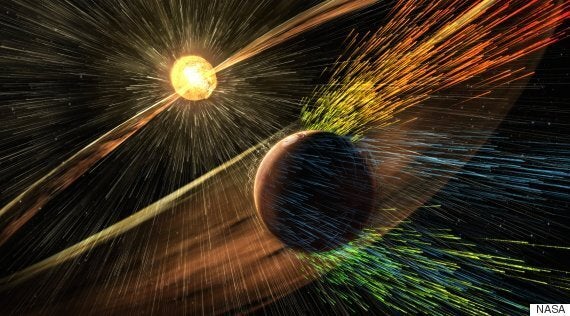The latest research from NASA has given us a telling picture of Mars' ability to host life.
Four studies, published in the journal Science, describes why the red planet which was warmer and wetter during its younger days, has become colder and drier, potentially reducing its ability to host life.
Research from NASA’s Mars Atmosphere and Volatile Evolution (Maven) mission has linked these changes to the interaction solar winds have with the planet's atmosphere.

According to the space agency, these solar winds are causing the Martian atmosphere to lose gas at a faster rate than normal -- 100 grams every second.
“Mars appears to have had a thick atmosphere warm enough to support liquid water which is a key ingredient and medium for life as we currently know it,” said John Grunsfeld, an astronaut for the NASA Science Mission Directorate in Washington.
“Understanding what happened to the Mars atmosphere will inform our knowledge of the dynamics and evolution of any planetary atmosphere.
"Learning what can cause changes to a planet’s environment from one that could host microbes at the surface to one that doesn’t is important to know, and is a key question that is being addressed in NASA’s journey to Mars."
SEE ALSO:
The solar wind is a stream of negatively and postively charged particles, protons and electrons, emanating from the sun's atmosphere at the speed of one millions miles per hour.
It carries a magnetic field, which generates an electric field when it passes Mars, which causes ions from Mars' atmosphere to shoot into space.
The MAVEN mission to Mars was launched in 2013, with the overall aim of analysing how much of the planet's water and atmosphere has been lost to space.